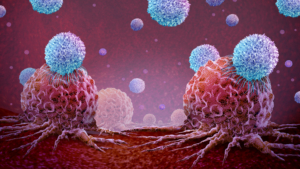Parkinson’s: factor protects from neuron decay
Scientists at Swedish Karolinska Institute have identified a factor that supports growth of midbrain dopaminergic (mDA) neurons, the nerve cells that degenerate during of Parkinson's disease.
The team headed by Ernest Arenas believe that their preclinical findings could be the beginning of the development of a therapy that helps to treat the incurable disease, which affects over 10 million people worldwide.
Investigating mouse and human midbrain dopaminergic neurons, the sort of cells that progressively degenerate in course of Parkinson’s disease, the researchers found that the the extracellular matrix protein laminin-511 (LM511) promoted the survival and differentiation of mDA neurons. In fact, adding LM511 to mouse mDA neurons proliferating in culture increased their numbers by a factor of eight compared to standard growth conditions, and decreased cell death by 3.5-fold after exposure to a neurotoxin.
The scientists found that cell survival and neuron differentiation in mouse and human stem-cell derived mDA neurons was mediated by the transcription cofactor YAP, which was activated in the midbrain dopaminergic neurons when LM511 bound to the integrin ?3?1. LM511-YAP signaling enhanced cell survival by inducing the expression of the microRNA miR-130a, which suppressed the synthesis of the cell death-associated protein PTEN.
In addition, LM511-YAP signaling increased the expression of transcription factors critical for mDA neuron identity, such as LMX1A and PITX3, and prevented the loss of mDA neurons in response to oxidative stress. The researcher says that enhancing LM511-YAP signaling, might be a way to prevent mDA neuron loss in patients with Parkinson’s disease. Alternatively, it could enhance the survival of mDA neurons in cell replacement therapies


 freshidea / Adobe Stock
freshidea / Adobe Stock
 adobe.stock.com - ipopba
adobe.stock.com - ipopba